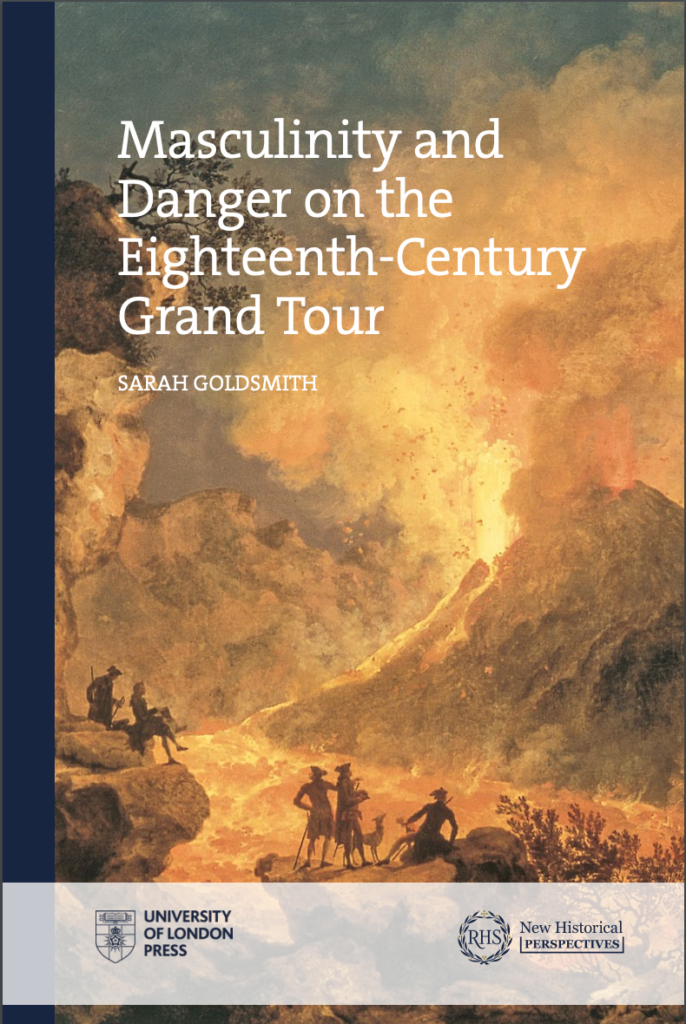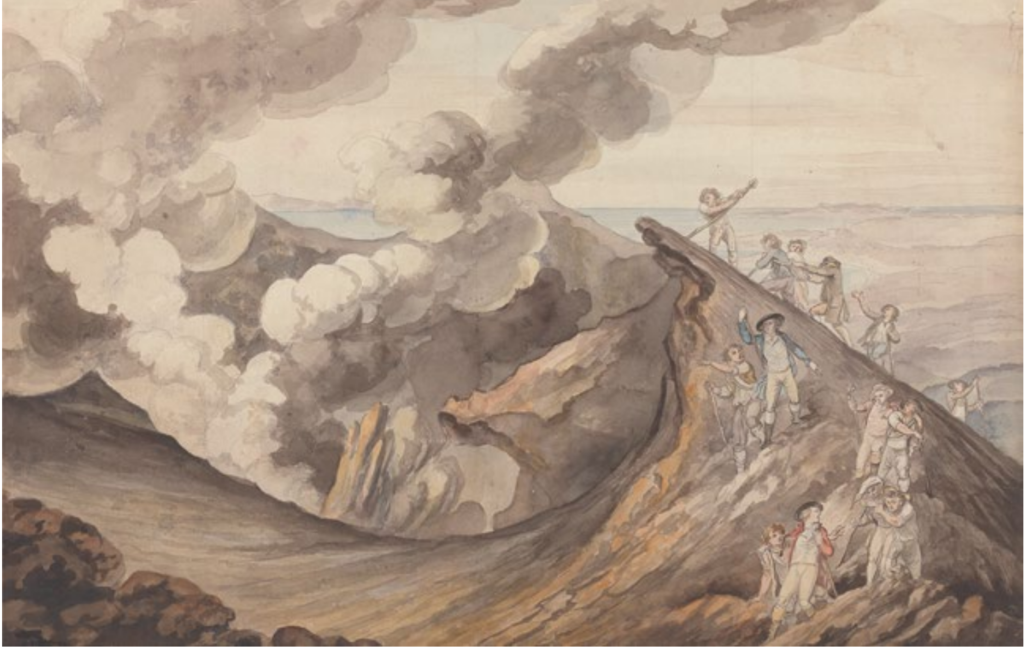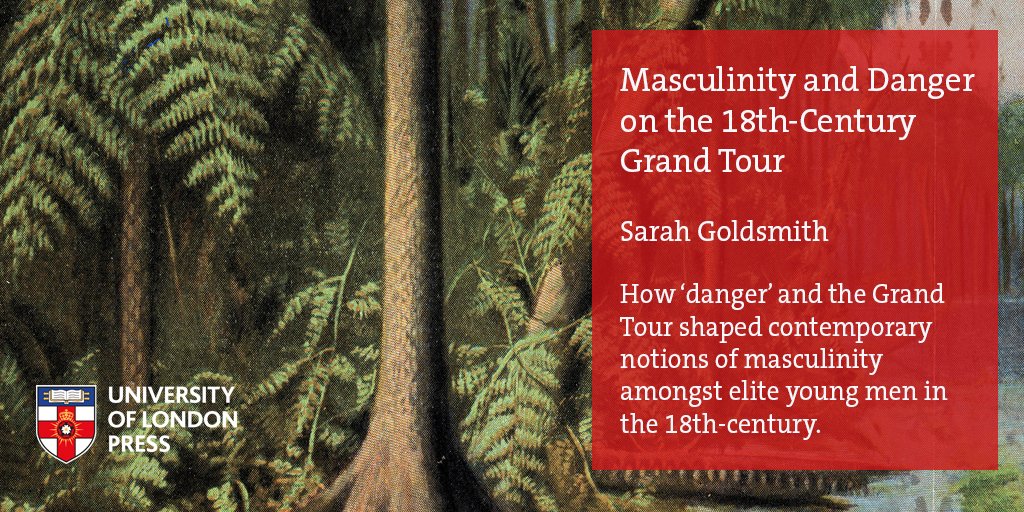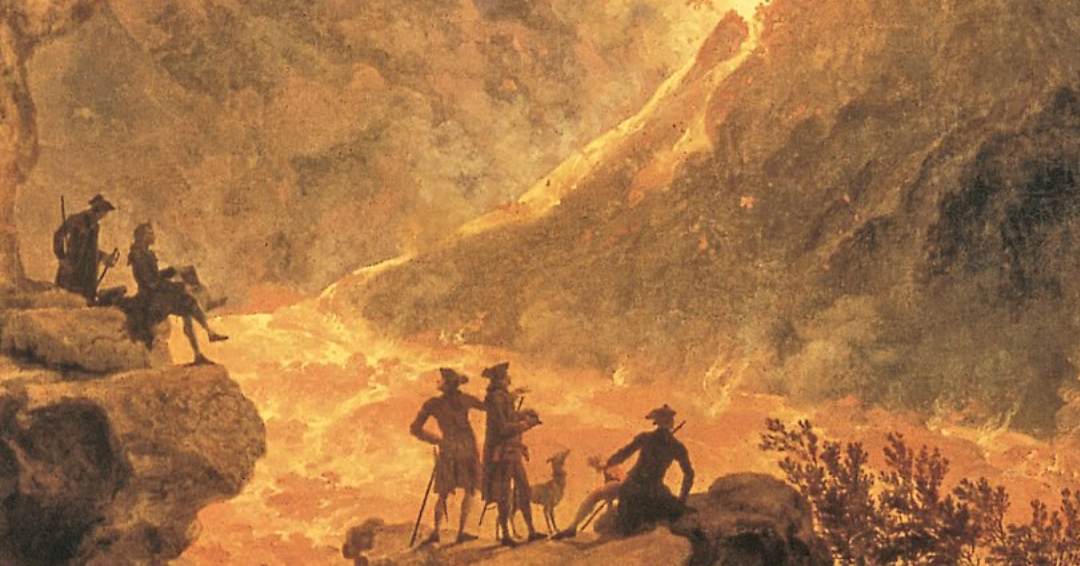By Sarah Goldsmith
In this post Dr Sarah Goldsmith introduces her new book, Masculinity and Danger on the Eighteenth-Century Grand Tour published by University of London Press on 30 November. Sarah’s book argues that argues that dangerous experiences were central to the Tour as a means of constructing elite masculinity and Britain’s next generation of leaders. Far from viewing danger as a disruptive force, Grand Tourists willingly tackled a variety of social, geographical and physical perils, gambling their way through treacherous landscapes; scaling mountains, volcanoes and glaciers; and encountering war and disease.
Masculinity and Danger on the Eighteenth-Century Grand Tour is the sixth and latest volume in the New Historical Perspectives series from the Royal Historical Society and the Institute of Historical Research.
As for all NHP titles, Sarah’s book is now available free Open Access to download and chapter-by-chapter via the JSTOR OA Books platform. It’s also available in hard and paperback print and as an ebook: now available with a 30% discount (see the end of this blog for details).
The eighteenth-century Grand Tour was experienced by generations of Britain’s aristocratic and gentry men. Its principal purpose was to maintain the power and privilege of Britain’s elite by educating, forming and testing its youthful participants. My new book, Masculinity and Danger on the Eighteenth-Century Grand Tour (November 2020) looks beyond the conventional focus on Italy, aesthetics, France and politeness to open up how the relationship between the Tour and eighteenth-century elite notions of masculinity was rationalised within aristocratic and gentry communities.
Archival records show that the scope, ambition, routes and itineraries of the Grand Tour were much more complex, varied and extensive than existing interpretations allow. This rich diversity gives rise to a question that deserves careful consideration: how does re-evaluating the Grand Tour’s rationales and agendas as dedicated to more than the formation of polite, refined masculinity contribute to our wider understanding of what it meant to be an elite man in this period?

My book explores this by focusing on the set of itineraries, activities, agenda and identities that coalesced around travellers’ encounters with danger, hazard and hardship. Continental travel comprised hours, days and months invested in physical exercises, hunting, playing sports, attending live military sites, jolting in carriages, inching alongside precipices, scrambling around glaciers and mountains, and arduously ascending Vesuvius: activities that were all united by a frisson of danger.
Rather than avoiding danger, eighteenth-century British elite culture was inclined to embrace and utilise it as a tool in the formation of elite masculinity. Danger was a jeux de societé: a game to be cheerfully chanced, gambled with and even enjoyed. This attitude was rooted in the enduring concept of a military service elite and related notions of honour as something to be proven, affirmed and defended through actions of courage, prowess and leadership. In this context, danger and hardship operated as transformative challenges to be confronted. By chancing danger on battlefields, hunting runs, perilous roads, Alpine glaciers and the slopes of Vesuvius, Tourists partook in a gamble that could elevate or destroy their physical health, Britishness and budding reputations as men of honour, courage and virtue.
The Grand Tour was undertaken by real men struggling to attain an ideal. Studying them therefore brings an element of ‘real-life’ complexity to the celebration of aspirant elite masculinity. Acts of genuine or foolhardy courage were undoubtably mixed with fear, reluctance and avoidance. Here, written narratives, commissioned artwork and careful self-presentation were crucial in glossing over such limitations. As R. W. Connell puts it, successful masculinity really was (or is) a matter of providing ‘a fairly convincing’ corporate and individual display of the ideal. Moreover, while a hardy, martial masculinity was an important part of eighteenth-century elite men’s conception of themselves, it was not the hegemonic ideal.

Henry Tresham, ‘The Ascent of Vesuvius’, 1785-9, Yale Centre for British Art, Paul Mellon Collection
Ultimately, a successful elite male was a man of many parts that hinged upon the core values and virtues of what it meant to belong to the aristocracy and gentry. This diversity was the foundation of any Grand Tour as individual men continually moved between multiple masculine identities and behaviours while remained united by a profound sense of shared social superiority.
Masculinity and Danger has had a long genesis dating back to my third-year Special Subject, where Ross Balzaretti introduced me to the vibrant history of British travel to Italy. Immersed in numerous accounts of travel, I was quickly struck by the disparity surrounding experiences of danger: fear either dominated entire narratives or was completely absent. After pondering elements of this in my undergraduate and master dissertations, I started a PhD at the University York. Here, my supervisor, Catriona Kennedy introduced me to the history of masculinity and in doing so, fundamentally reshaped my research. Perceptions of and responses to danger are highly nebulous categories. Analysing them in terms of how they related to masculinity provided an important framework to my research and started to show me how my work could contribute to debates well beyond travel history.
The chance to redevelop my work after my PhD has been invaluable. Chapters have been cut, split apart and re-distributed. Having focused on demonstrating the importance of non-Italian destinations for my doctorate, I have since been able to fill the ‘Italy-shaped hole’ pointed out by my examiners (Roey Sweet, Mark Jenner), and to fill it with a large, sometimes erupting volcano. I also faced the vexing challenge of articulating a wider eighteenth-century mentality of risk and danger with, I hope, more satisfactory results. Aided by my mentor, Roey Sweet, and by the New Historical Perspectives editorial approach, this process of breaking down, expanding and rebuilding my work has been lengthy, challenging but ultimately deeply satisfying. Through the process of peer review, author workshop, and the support of Philip Carter as my editorial contact, the editorial team has provided me with rigorous, dedicated support, working with me closely to ensure that my first monograph reached its full potential.
****

Dr Sarah Goldsmith is a lecturer in urban and material culture history at the University of Edinburgh, having previously held a Leverhulme Early Career Research Fellowship at the University of Leicester. In 2018 Sarah became an AHRC/BBC New Generation Thinker, and she continues to work with organisations like BBC Radio 3 and the V&A.

Masculinity and Danger on the Eighteenth-Century Grand Tour is published on 30 November 2020 as part of the New Historical Perspectives series from the Royal Historical Society, Institute of Historical Research and University of London Press.
Sarah’s book is available Open Access and in hard and paperback print editions and as an ebook. Print edition discounts (of 30%) are available for all: in the UK, EU & ROW using the code HERMANO30 from here; and in North America via University of Chicago Press using code RHSNHP30 from here.

